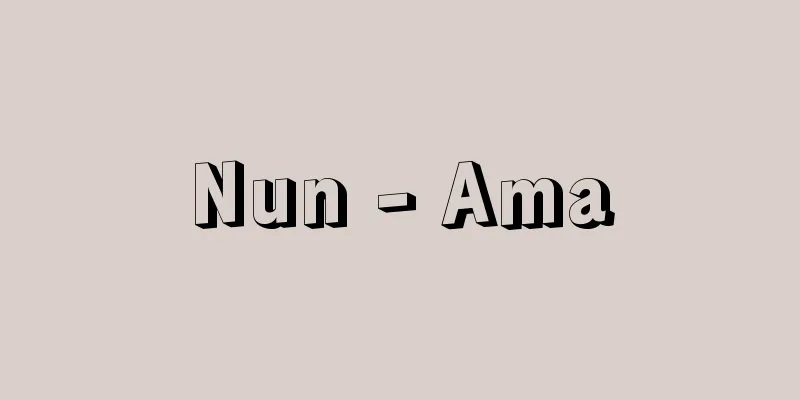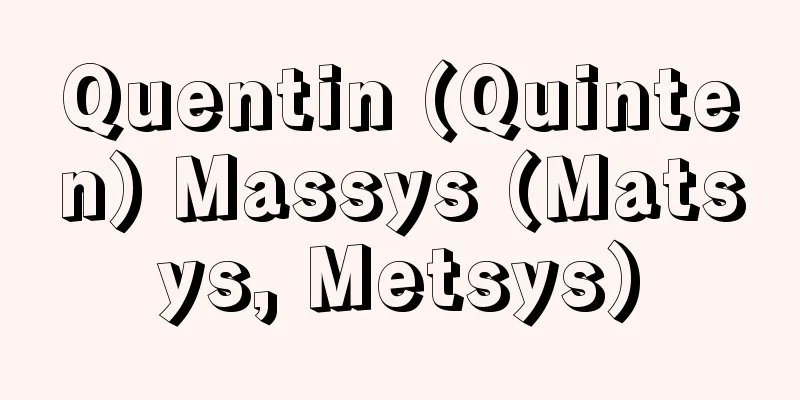Rainer Maria Rilke

|
Poet born in Prague, the capital of Bohemia in the former Austro-Hungarian Empire. One of the leading poets in the history of German poetry, in the first half of the 20th century he is considered on the same level as George and Hofmannsthal, and in the history of contemporary European poetry he is considered on the same level as T. S. Eliot and Valery. Since his youth he has never settled in a specific place, wandering around Europe, greedily absorbing the culture of each place. This cosmopolitan character that he naturally acquired while greedily absorbing the culture of each place, and his critical spirit that continued to focus on the nature of human existence without compromising his anti-time and anti-conventional stance throughout his life, these two intertwine to form the basis of his works. [Tetsuhiko Hiyama] Childhood and adolescenceRilke's childhood under these parents, who would eventually separate when he was nine years old, was not necessarily a happy one. His father was depressed, having retired from the army due to poor health and contented himself with a job at a private railway company, and his mother was a show-off and a dreamer, aspiring to be in high society and dressing her only son as a girl until he was five. He was sent to military school to carry on his father's dreams but it only ended up damaging his nerves, so he began writing poetry around the time he dropped out, publishing his first collection of poems at the age of 19. While studying at the University of Prague and the University of Munich, he wrote a lot of poetry, prose, plays, and critiques, and published several books, but all of his works were merely imitations of the styles of his own time and previous eras, such as neo-romanticism, naturalism, and Jugendstil (Jugend style), and did not have an original outline. He began to produce unique works while associating with Lou Andreas-Salome, whom he met in Munich in 1897 and with whom he maintained a lifelong friendship. His representative works from this period include "Florence Diary" (1898), which he continued to write for Lou during a trip to Italy that opened his eyes to Renaissance paintings, "Hours" (1905), the fruit of two trips to Russia he accompanied Lou, and the short story collection "Stories of God" (1900). These show a pantheistic way of understanding the world based on a free-spirited romantic and mystical sensibility. His short story collection "Two Stories from Prague" (1899), which shows sympathy for the Czech national independence movement, also shows a social and political interest that would not be apparent in his later works. [Tetsuhiko Hiyama] New developmentsIn 1900, he encountered contemporary art at the artists' colony in Worpswede, a suburb of Bremen, which prompted new developments in his life and work. After marrying Clara Westhoff, a local sculptor, and completing his critical biography of the artist Worpswede (1903), he went to Paris to write On Rodin (1902/07). Some of the poems in Figurative Poems (1902, expanded second edition 1906) had already attempted materialistic expression to escape the unlimited emotional outflow that he had previously expressed, but he continued to write poems in New Poems (1907, supplementary volume 1908) based on the importance of handiwork and "seeing" that he had learned from Rodin. These poems, generally called "poems of things," with their strong sculptural style, are the product of a will to identify the self with the object and to objectify emotions, and were intended as a counter to the anxiety of survival in modern society generated by the big city of Paris. "The Notes of Malte" (1910), written around the same time, also expresses a will to obtain a new reality amid anxiety. [Tetsuhiko Hiyama] Late-life achievementsIn the following ten years, he published only one collection of poems, "The Life of Maria" (1913), but his creativity did not decline, except for the period immediately after the completion of "The Notes of Malte" and during World War I, when he served in the military. He sought a new way of writing poetry that went beyond the formality of the poems in "New Poems," and reinterpreted the anxiety of life that had been entrusted to individual images as a direct problem of existence. He wrote "Duino Elegies" (1923) based on the spiritual nourishment he had accumulated through his travels to Africa and Spain, his familiarity with Picasso's paintings and Hölderlin's poetry, and his encounter with Valéry's poetry. In "Sonnets to Orpheus" (1923) and "Duino Elegies," which were written at the same time, he suggests a unique space of poetry and existence, an "open space" that permeates life and death, and attempts to evoke it through various images. In his final years, after these two major works, Rilke wrote many poems that can be seen as the realization of "open space" itself, showing the point he had reached. Because of the content that can be connected to existentialism, Rilke's poetry has often been the subject of philosophical consideration (Heidegger, etc.). Setting aside the content of his "thoughts," which may seem to form a mythical sphere of the closed self, the value of his poetry lies above all in the fact that he enhanced the expressive power of the German language and expanded the range of expressive possibilities of poetic language. This is the result of his expressive will to respond to the sense of life in modern cities, which could no longer be grasped by traditional styles or linguistic expressions, by intellectualizing the physical sensations themselves. The poetic method of constructing a poetic world based on words that themselves have a physical nature, as seen in his later poems in particular, is directly connected to the method of modern poetry, which breaks away from the logocentrism of modern Europe, contextualizes poetry, and attempts to reconstruct a reality that has become unforeseeable. [Tetsuhiko Hiyama] "Complete Works of Rilke, translated and supervised by Fujikawa Hideo, 7 volumes (1973-78, Yayoi Shobo)" ▽ "Collection of Rilke's Letters, translated by Tsukagoshi Satoshi and Goto Nobuyuki, 4 volumes (1977-88, Kokubunsha)" ▽ "Studies on Rilke, by Kamishina Yoshio (1982, Ozawa Shoten)" ▽ "Collection of Essays on Rilke, edited and translated by Tsukagoshi Satoshi and Taguchi Yoshihiro (1976, Kokubunsha)" [References] | |Source: Shogakukan Encyclopedia Nipponica About Encyclopedia Nipponica Information | Legend |
|
旧オーストリア・ハンガリー帝国領ボヘミアの首府プラハに生まれた詩人。ドイツ詩史上有数の詩人で、20世紀前半においてはゲオルゲ、ホフマンスタールと、また同時代のヨーロッパ詩史においてはT・S・エリオット、バレリーと並び称される。青年期以降特定の地に居を定めずヨーロッパ各地を転々とし、土地土地の文化を貪婪(どんらん)に吸収するうちにおのずと備わったコスモポリタン的な性格、および、反時代・反通俗の姿勢を終生崩すことなく人間存在のあり方を凝視し続けた批判の精神、それらが絡み合って作品の根底を形づくっている。 [檜山哲彦] 幼・青年時代病弱のゆえに軍隊を退き民間鉄道会社の職に甘んじて鬱々(うつうつ)としていた父親、社交界にあこがれ、ひとり息子が5歳になるまで女児の格好をさせていた見栄(みえ)っ張りで夢みがちな母親、リルケ9歳のころ離別することになるこの両親のもとでの幼年時代は、かならずしも幸福なものではなかったという。父の夢を継ぐべく入れられたものの神経を傷めるだけに終わった陸軍の学校を中退するころから詩作を始め、19歳のとき処女詩集を出版。プラハ大学、ミュンヘン大学在学中には詩、散文、戯曲、評論などを盛んに書き、何冊かの本を出したが、いずれの作品も新ロマン派、自然主義、ユーゲントシュティル(ユーゲント様式)など、当時代・前時代の様式の模倣にとどまり、独自の輪郭をもつものではなかった。1897年ミュンヘンで知り合い、生涯にわたって好誼(こうぎ)を絶やすことのなかったルー・アンドレーアス・ザロメとつきあううちに個性のある仕事がなされ始める。ルネサンス絵画に目を開かれたイタリア旅行のあいだルーにあてて書き続けた『フィレンツェ日記』(1898)、ルーと同行した2回のロシア旅行の成果である『時祷(じとう)詩集』(1905)、また短編集『神さまの話』(1900)などがこの時期の代表作で、放縦なロマン的・神秘的感受性に基づく汎神(はんしん)論的な世界把握の仕方があらわである。またチェコ民族独立運動への共感を示す短編集『プラハ二話』(1899)には、後の作品には表だつことがなくなる社会的・政治的な関心もうかがえる。 [檜山哲彦] 新たな展開1900年、ブレーメン郊外ウォルプスウェーデの芸術家村における同時代芸術との出会いが、人生と仕事のうえでの新たな展開を促した。同地の彫刻家クララ・ウェストホフと結婚し、画家評伝『ウォルプスウェーデ』(1903)を仕上げたのち、『ロダン論』(1902/07)の執筆を依頼されてパリへ赴くのである。すでに『形象詩集』(1902、増補第二版1906)のいくつかの詩においても、それまでの無限定な情感の流露を逃れようとする即物的な表現が試みられていたが、さらにロダンのもとで学んだ手仕事の重要さと「見ること」に基づいて、『新詩集』(1907、別巻1908)の詩が書き継がれていく。一般に「事物詩」とよばれる彫塑風の造型性の強いこれらの詩は、自我と対象とを同一視し感情を客体化しようとする意志の産物であり、大都市パリが生み出す現代社会の生存の不安への対抗物として意図されたものである。同時期の『マルテの手記』(1910)もまた、不安のなかで新たな現実性を得ようとする意志によっている。 [檜山哲彦] 晩年の到達点これ以降10年余の間に発表された詩集は『マリアの生涯』(1913)のみであるが、『マルテの手記』完成直後および自らも軍務についた第一次世界大戦中を除いて、創作力は衰えることがなかった。『新詩集』の詩の形式性を超える新たな詩作法を模索し、そこでは個々の形象に託されていた生の不安をじかに存在の問題としてとらえ直していきつつ、アフリカやスペインへの旅行、ピカソの絵やヘルダーリンの詩への親炙(しんしゃ)、バレリーの詩との出会いなどによって蓄えられた精神の糧(かて)をもとにして『ドゥイノの悲歌』(1923)が成った。同時に書き上げられた『オルフォイスへのソネット』(1923)と『ドゥイノの悲歌』においては、生と死を貫く「開かれた空間」という独自な詩と存在の空間が示唆され、さまざまな形象によってそれを喚(よ)び起こそうとする。またこれら両大作以降の最晩年には、「開かれた空間」自体の実現とみなしうる詩が多く書かれ、リルケの到達した地点を示している。 実存主義にも通じうる内容のゆえに、リルケの詩はしばしば哲学的な考察の対象となった(ハイデッガーなど)。ともすれば閉ざされた自己の神話圏を形づくるとみえなくもない「思想」の内容はさておき、その詩作の価値はなによりもまずドイツ語の表現能力を高め、詩語の表現しうる領域を拡大した点にある。それは、従来の様式ないし言語表現によっては把握不可能となった近代都市の生活感覚に対して、ひたすら身体感覚自体を知性化することをもって応じようとした表現意志の成果である。とくに後期の詩にみられるような、それ自体肉体性を備えたことばに基づいて詩の世界をつくりあげてゆく詩法は、ヨーロッパ近代のロゴス中心主義を脱し、詩を状況化し、見通しえなくなった現実の再構成を図ろうとする現代詩の方法に直接つながっていくものである。 [檜山哲彦] 『富士川英郎監訳『リルケ全集』全7巻(1973~78・弥生書房)』▽『塚越敏・後藤信幸訳『リルケ書簡集』全4巻(1977~88・国文社)』▽『神品芳夫著『リルケ研究』(1982・小沢書店)』▽『塚越敏・田口義弘編訳『リルケ論集』(1976・国文社)』 [参照項目] | |出典 小学館 日本大百科全書(ニッポニカ)日本大百科全書(ニッポニカ)について 情報 | 凡例 |
Recommend
Six feet - Rokushaku
Abbreviation of Rokushaku fundoshi. A loincloth t...
Ichiki Shell Mound
A shell mound from the late Jomon period in Ichiki...
Appeal - Kouso
In procedural law, this is a type of appeal that ...
Conidiospore
…conidiospores are spores formed asexually by bud...
Olgierd - Olgierd
…son of Grand Duke Gediminas. Also called Olgierd...
Ajimar Play - Ajimar Play
...In the local dialect, it is called Moashibi. M...
Atractylodes japonica
A perennial herb of the Asteraceae family, distrib...
Tacit knowledge
Knowledge that cannot be verbalized. A term used ...
Spotlight
〘noun〙 (spotlight) A type of floodlight. It focuse...
Incline
A device to facilitate transportation between two ...
Livonia Chronicles - Livonia Nendaiiki
These two chronicles, which document the activitie...
Tribute trade
This refers to China's premodern trade relatio...
Group velocity
The speed at which a wave packet travels through ...
Sechehaye, A. (English spelling) SechehayeA
...Professor at the University of Geneva (1891-19...
Sasa senanensis (English spelling) Sasasenanensis
…[Tetsuo Koyama]. … *Some of the terminology that...









